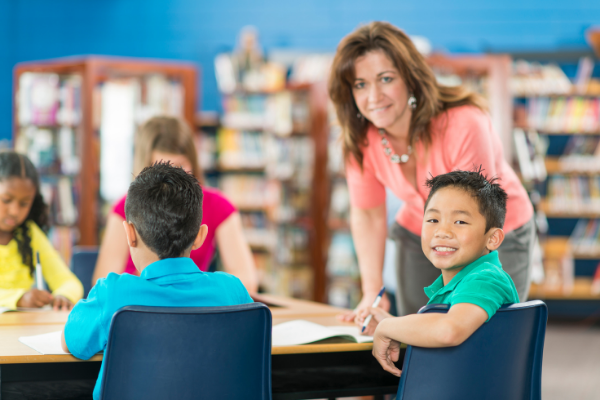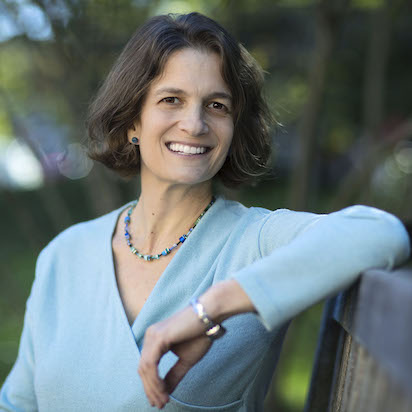By: Sara E. Rimm-Kaufman & Krystal Thomas
Highlights:
- Four out of 5 U.S. teachers are White, but more than half of their students are students of color. Almost all teachers have college degrees and the majority are middle class, but one-fifth of students live in poverty.
- Just as teachers acquire skills to teach reading or math effectively, the skills to teach students who are different from them can be learned, too.
- New advancements in psychology shed light on how to create more equitable learning environments, which we shared in a new APA research brief.

How can we solve problems that stem from implicit bias? One important solution involves recruiting more diverse educators. Yet another solution is to prepare White, middle-class educators to teach students who are different from them. This brief focuses on the latter solution.
If teachers are concerned about own biases, that is a good thing. That means teachers care and want to do better for their students. The human mind is imperfect and all people – even educators – carry biases that can prevent their students from succeeding in school and beyond.
Learning how to reduce one’s own biases requires self-reflection. It is important that all educators hold themselves and each other accountable to do this necessary and important work. Without these efforts, educators underserve their students from traditionally marginalized groups and prevent them from reaching their potential.
Four Suggestions to Improve Teaching Practices
We have four suggestions that use psychology to support teachers to be more effective with students who are different from them. We mention these suggestions below and you can learn more about these ideas in the original 2-page research brief.
We recommend educators:
1. Become Self-Aware & Unlearn Prejudicial Habits by Detecting, Reflecting and Rejecting
Mostly, we are unaware of our biases. But, every once in a while, we become aware of our stereotypes. In those instances, instead of being embarrassed or pushing thoughts about biases away, use your awareness as an opportunity to detect the bias, reflect on your behavior, and reject the stereotype by replacing it with a new way of thinking.
2. Learn About Your Students & Their Perspectives
Learn more about your students so you can understand their perspectives. Take time to understand your classroom from their point of view, identify their strengths and interests, cultivate empathy for them, and appreciate their uniqueness. Use what you know about your students’ interests to create trusting relationships with them.
3. Individuate to Counteract Stereotypes
Counteract stereotypes by individuating. Individuating means noticing individual students’ behaviors and becoming aware of their strengths, challenges, and personal preferences. It means seeing a person as an individual, not only as a member of a social category.
4. Transform the School Climate & Culture
Amplify the voices of individuals from groups that tend to be left out of conversations and decision-making. Make sure that school mission statements, policies, and curricula reflect inclusion, respect, and equity for diverse groups. Include the perspective of diverse groups in school practices (e.g., lesson plans, school-wide activities, community events).
Read more from these suggestions, what the research says, key definitions and more in this research brief! You can view other research briefs for educators through APA online.
If you have any comments or questions about this post, please email Youth-Nex@virginia.edu. Please visit the Youth-Nex Homepage for up to date information about the work happening at the center.

Author Bio: Dr. Sara Rimm-Kaufman conducts research on elementary and middle school classrooms with the goal of using evidence to improve the quality of schooling experiences for teachers and students. Over the past twenty years, Rimm-Kaufman has led a dynamic team of researchers, project managers, post-docs, students, and staff toward improved understanding of the systematic ways that classroom social and psychological experiences are productive (or not productive) environments for child and youth development. In doing so, her research considers the diversity present in schools, respects the challenges that teachers face every day, and recognizes the complexity of school improvement. In all of her work, she has a steadfast commitment to educational equity.

Author Bio: Dr. Krystal Thomas is an education researcher at SRI Education who brings a developmental psychology and equity lens to research, evaluation, and capacity building. Her projects span issues of teacher quality and practices, students’ academic and social identities, and patterns of contextual inequality in the classroom. Before joining SRI, Thomas was an IES Postdoctoral Research Fellow at the Center for Advanced Study of Teaching and Learning at the University of Virginia, a lead statistician at the Metropolitan Educational Research Consortium, and a lab manager at the Cognitive Intervention Research, Culture and Learning Environments in Schools (CIRCLES) Lab. Thomas holds a PhD and master’s in developmental psychology from Virginia Commonwealth University. She also earned a bachelor’s in psychology from Virginia State University.
